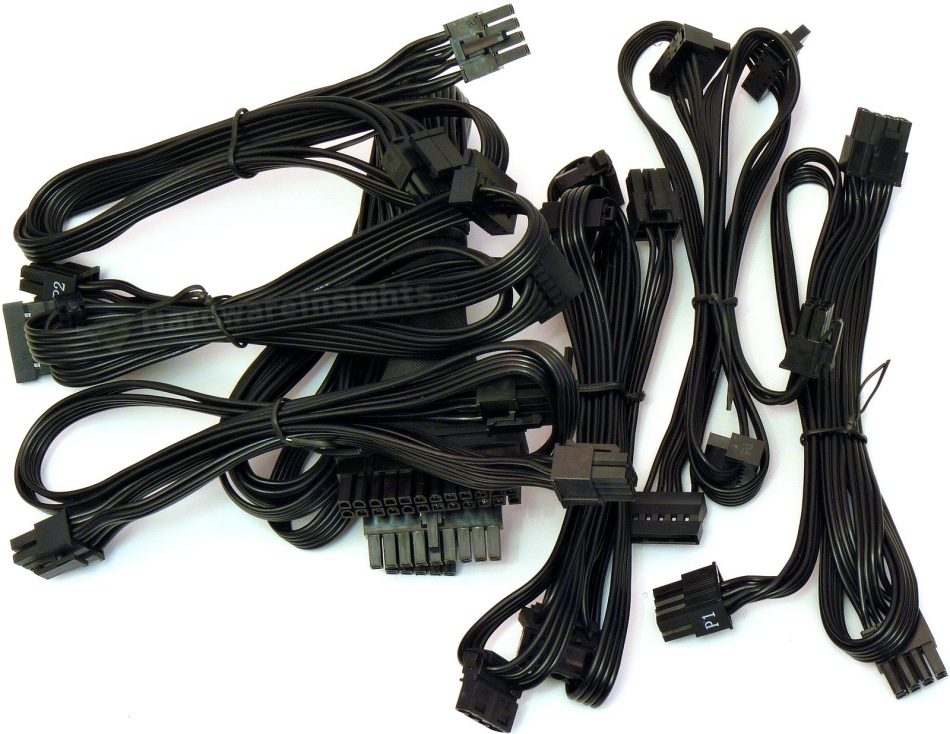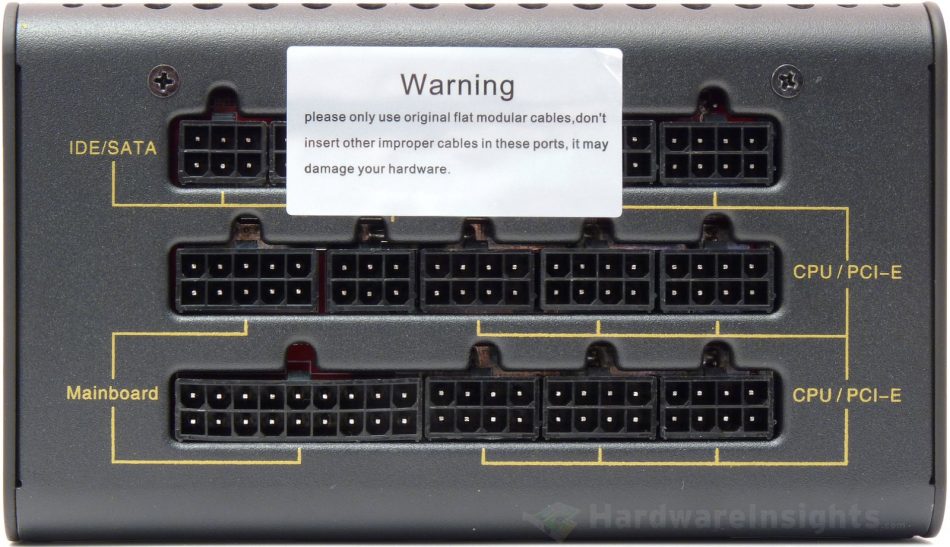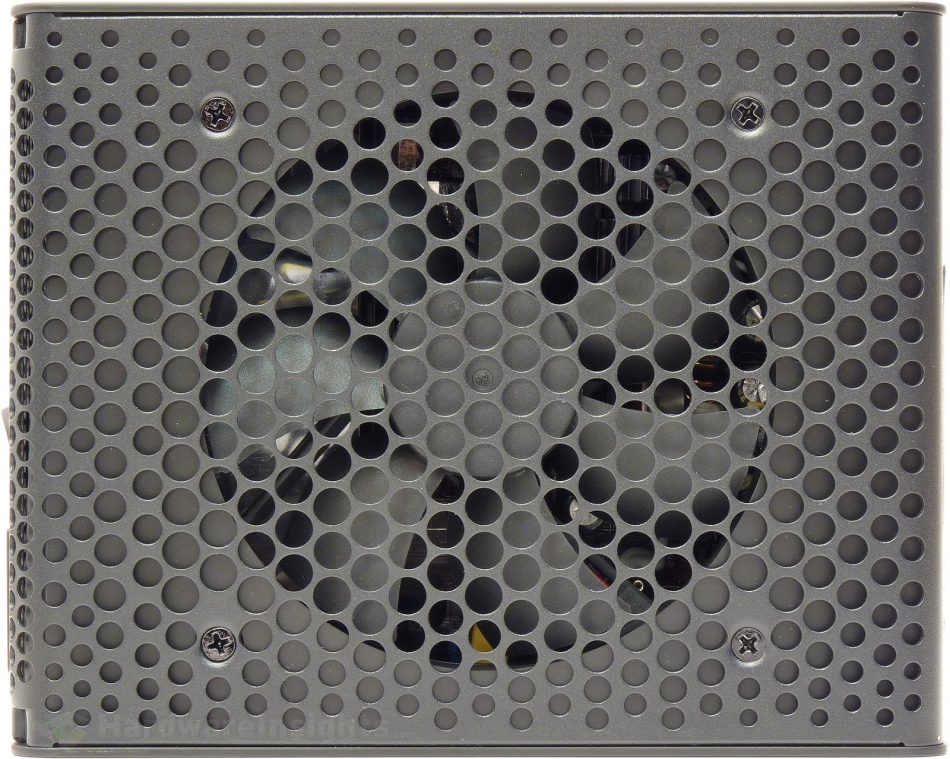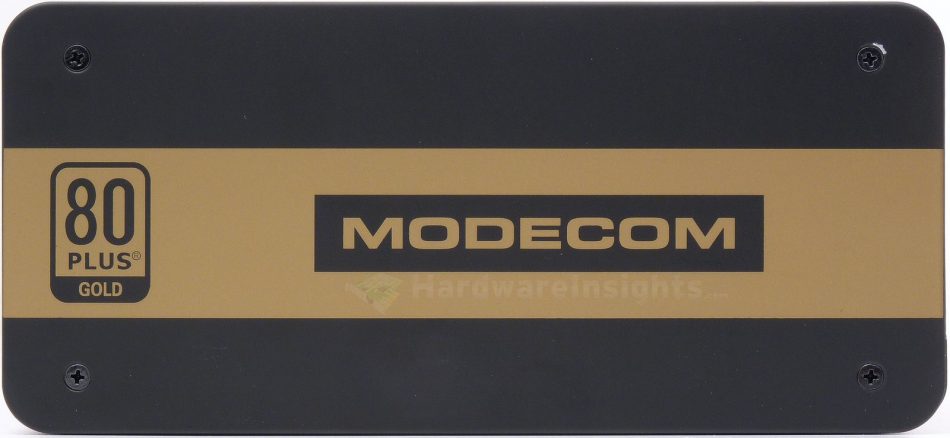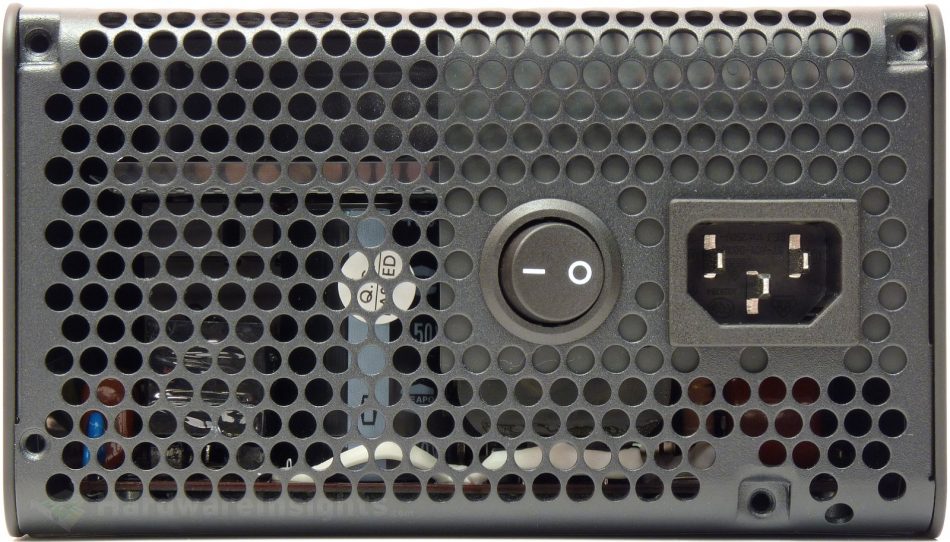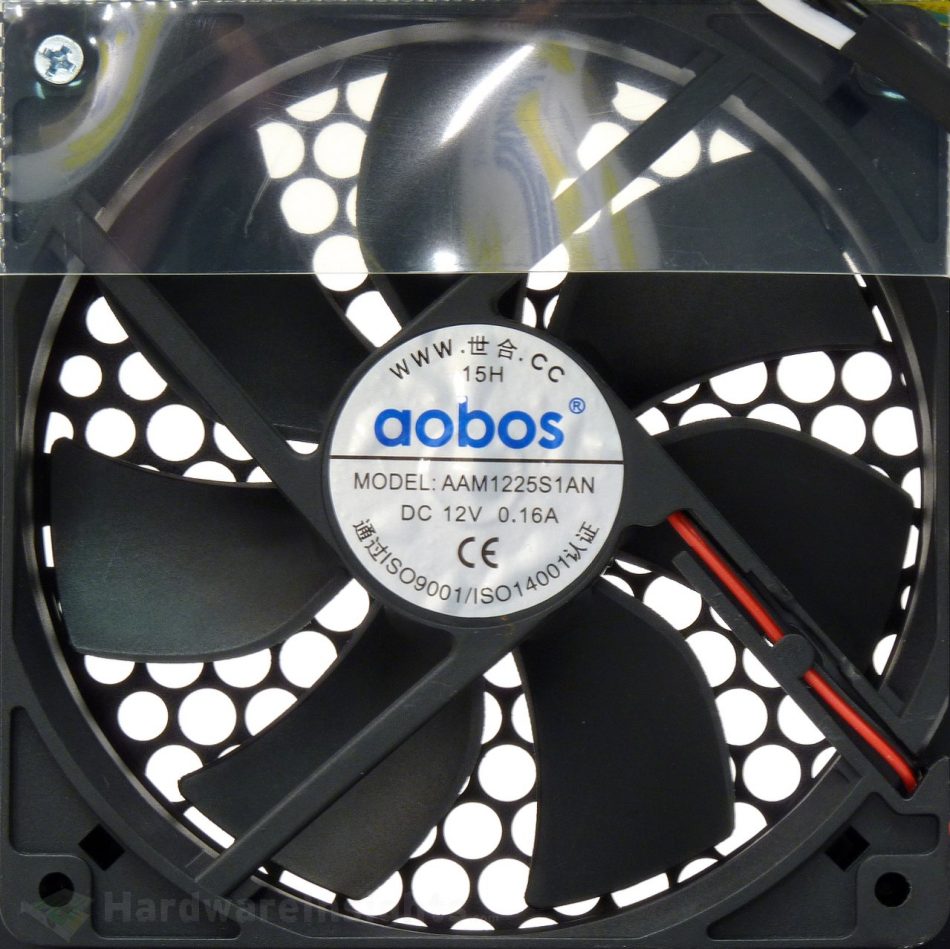Contents
- 1Introducing the Modecom Volcano 750 Gold (ZAS-MC90-SM-750-ATX-VOLCANO-GOLD)
- 1.1Packaging and accessories
- 2Connectors & cabling
- 2.1Casing & cooling
- 3Input filtering
- 4Primary side
- 4.1+5 V stand-by rail
- 5Secondary side
- 5.1Build quality
- 6Load testing
- 6.1Loading +5 V SB
- 6.2Hold-up time
- 6.3Combined loading
- 6.4Combined loading ripple
- 6.5Crossloading, overloading
- 6.6Crossloading, overloading ripple
- 6.7Fan speed, temperatures and noise
- 7Conclusion and evaluation
- 7.1Thanks
- 7.2Discussion
Connectors & cabling
SAMA made it simple so all the wires in the Volcano 750 Gold cabling are 18AWG, fused to form flat ribbons. That includes the feedback/signal wires as well and wiring for both the 6+2pin PCIe connectors on each cable. Good thing is there is at least 8 wires for both, though two of the grounds come from the same pin on the PSU side. And none of the connector pins are gold plated. On first look it would appear as if there were feedback wires for different voltages, but SAMA just uses two wires for each pin in the Main ATX connector, nothing more. Though I think this may be customer-specific and it may be possible to have those feedback sense wires provided, most likely by changing the modular board for different model.
In total, we have:
- 1× Main ATX (24pin): 57 cm
- 1× ATX 12 V (4+4pin): 63 cm
- 4× PCIe (6+2pin): 2× 51 cm, 2× 65 cm
- 8× SATA: 2× 51 cm, 2× 66 cm, 2× 82 cm, 2× 97 cm (uff)
- 4× peripheral molex: 50 cm, 66 cm, 82 cm, 97 cm
- 1× Berg for FDD: 112 cm (uff)
We can see the modular cabling uses the usual set of Molex Mini-Fit Jr. connectors aka EPS for ATX 12 V/PCIe cabling, and 6pin (PCIe) for peripherals. Not gold-plated either. Is it me, or is the 18pin one for Main ATX cabling somehow deflected?
Casing & cooling
The metal chassis of the Volcano 750 Gold is constructed from 1.2mm SECC for the upper and lower plates, and 2.2mm for the sides. It has a matte black finish (which is most likely a powder coating). Upon first look, the chassis seems to be complicated and expensive, but it is not entirely so. The whole upper lid is basically a single piece of metal sheet, with round perforations punched to it. It is then bent pretty much as the standard lid is, only not 90°, but with rounded edges. The bottom plate with the board is screwed to it. Though in my opinion the steel is still unnecessarily thick thus more expensive. There is also a plastic cover to channel the air through the unit (so all the perforations are only design feature and bear no practical use). I think this design will also collect dust between the perforated chassis and the plastic.
So as has been stated, the sides use pretty thick and smooth steel plates, SAMA most likely uses such so they help holding the shape of the unit. Either that, or it is light armoring to made the unit bulletproof. But they also add some considerable dead weight (and costs). It is also a place where they usually print logos of the brand they make the unit for (or their own). It is just a pity they did not come up with a way to use them as heatsinks, they would be great for that thanks to the thickness and surface area, now all the material is pretty much just useless. Because not only is the board quite large, but also the shape of the chassis adds a few centimeters. As a result, the whole unit is quite deep, which may actually be quite a disadvantage. This is another issue, Modecom does not state the dimensions of the unit. The length is close to 19 cm which really is a lot for 750W 80 PLUS Gold certified unit in 2017. The whole design is somewhat extraordinary, with standard casing the unit may be noticeably shorter, lighter and the saved costs could be used elsewhere, like for longer warranty. I think this design may be converted to fanless easily, the chassis is ready for it but SAMA did not go for it (not yet anyway).
The appearance of the back of this unit continues in the same manner. Notice that as the edges are rounded, SAMA had to press it inside to form flat surface where screw worms may be tapped into. That is why there are such long thumbscrews, the worms are deeper than usual. The area of the back side where air can exit the unit is not that large though. As you can see, the plastic cover also blocks noticeable part around the inlet and single-pole AC switch.
The fan is from Aobos (Dongguan Shihe Plastic Electronics Co., Ltd.) who usually supplies SAMA. It is the AAM1225S1AN, a 12cm sleeve-bearing model. According to the spec sheet I found, it is supposed to have maximum speed of 2100 RPM, airflow of 82.43 CFM, static pressure 2.91 mm of water and noise of 37.95 dBA. However, there it is with current draw of 0.25 A. Here we can see 0.16 A so the actual speed may be different (lower). A plastic film again blocks about a quarter of the fan.
